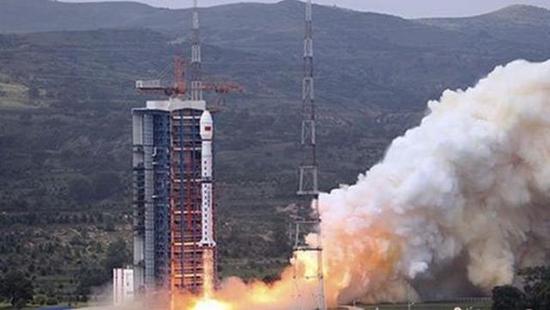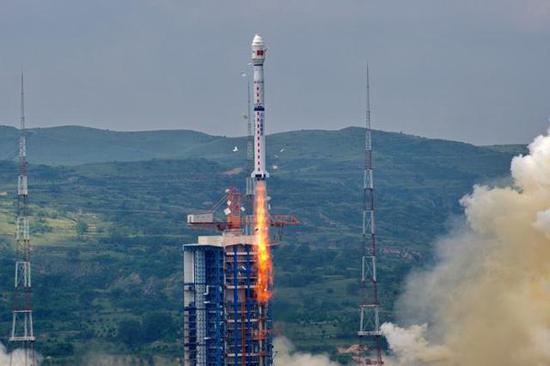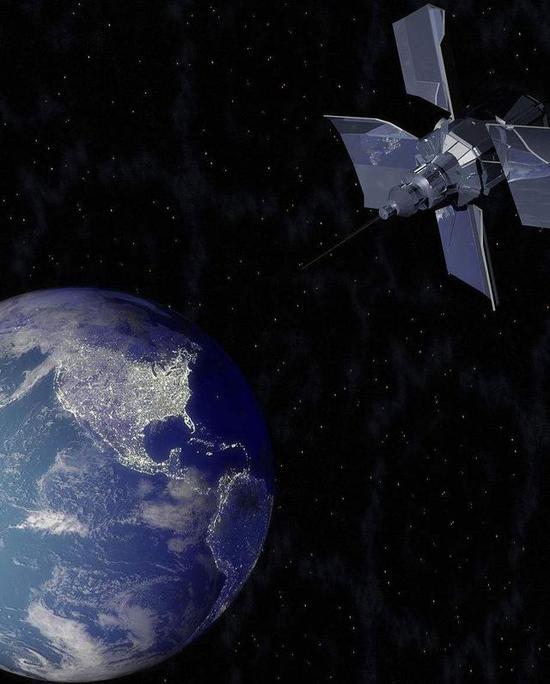Click for video
http://www.xinhuanet.com/2018-11/19/c_1123737204.htm
网正式上线驱走"心灵感冒"远离抑郁焦虑新红旗H7荣耀登场
新华网> > 正文

从指南针到北斗:中国智慧为“一带一路”导航
2018-11-19 19:58:57 来源: 新华社客户端
关注新华网
微信
微博
Qzone
11月19日2时7分,中国在西昌卫星发射中心用长征三号乙运载火箭(及远征一号上面级),以“一箭双星”方式成功发射第四十二、四十三颗北斗导航卫星,这两颗卫星属于中圆地球轨道卫星,是中国北斗三号系统第十八、十九颗组网卫星。 新华社记者 琚振华 摄
新华社西昌11月19日电(记者喻菲、谢佼、李国利)中国古人发明指南针开启了人类大航海时代。如今,中国正在建设的北斗卫星导航系统也将推动各国间的经贸、科技交往,造福全人类。
19日又有两颗北斗三号卫星升空。“北斗三号基本系统星座部署完成,迈出北斗从国内走向国际、从区域走向全球的关键一步。”北斗卫星导航系统总设计师杨长风说。
中国将在年底前为“一带一路”国家提供基本导航服务。2019年至2020年,中国还将发射11颗北斗三号卫星。届时,世界任何一个地方都可用上北斗提供的高精度、高可靠定位、导航、授时服务。
“中国的北斗系统走出了自己独特的技术路径,为国际卫星导航理论和体系贡献了中国智慧。”北斗系统副总设计师谢军说。
11月19日2时7分,中国在西昌卫星发射中心用长征三号乙运载火箭(及远征一号上面级),以“一箭双星”方式成功发射北斗三号系统第十八、十九颗组网卫星。 新华社记者 琚振华 摄
放飞北斗
2018年共有18颗北斗卫星从西昌卫星发射中心升空。很多卫星试验队员在年初进驻发射基地时,山谷中白杨树刚刚吐出嫩芽,等到他们送走最后两颗卫星时,树叶已经落光。
中国航天科技集团五院北斗三号卫星总指挥迟军在山谷中住了大半年,将一颗又一颗卫星送入太空。作为总指挥,他却从未亲眼见过北斗卫星升空的景象,每次发射他都守在指挥屏幕前监控数据。
“今年是从未有过的高密度发射,我们通过改革管理流程,提高了工作效率,发射场的卫星试验人员比以往减少了近一半,在发射场的时间缩短近三分之一。”迟军说。
而在北京的五院总装大厅,多颗正在研制中的北斗卫星已初具规模。
迟军说,五院不断提升宇航智造能力,大大缩减了卫星研制周期,推进航天科研生产转型升级,有力托举了北斗导航卫星组批生产和密集发射。
北斗三号副总设计师王金刚参与了从北斗一号到三号的研制,他说:“能投身到这项中国标志性工程,发挥自己的聪明才智是很难得的。”
他对多次成功已没有太深刻的印象,反而失败的经历让他最难忘。2009年一颗北斗二号卫星在轨发生故障。为了找出原因,整个团队在办公楼里一个多月没出来,每天工作到后半夜。
“那是一次刻骨铭心的经历。”王金刚说。
研制人员最后终于找到问题原因和解决方案,此后,不只是北斗卫星,所有中国卫星都避免了类似的问题。
“亲朋好友听说我是造北斗卫星的,常会拿出手机给我看能收到几颗北斗的信号。现在为大家定位导航的还是以GPS为主,北斗为辅。我希望再过几年,大家能以北斗导航为主,那样我就感觉没白干。”王金刚说。
北斗卫星团队在发射前开展测试。(航天科技集团五院供图)
中国智慧
中国1994年决定建设卫星导航系统,2000年北斗一号系统建成,尽管它的服务区域有限,定位精度不算高,但在当时中国国力的条件下,仅用了两颗卫星就实现了中国卫星导航系统的从无到有,独创了定位体制。
此后,中国又用8年时间建成了由14颗卫星组成的北斗二号系统,于2012年底向亚太地区提供服务。北斗二号的投入使用,从根本上摆脱了中国对国外导航系统的依赖。
2009年中国开始建设北斗三号全球系统,技术又有大幅提升,卫星可以利用星间链路实现相互间的通信、数据传输和测距。卫星寿命从北斗二号的8年提升到10年以上,信号性能和精度明显提高。北斗三号还采用了中国自主研发的高精度铷原子钟和氢原子钟,300万年只差1秒。北斗三号定位精度提升至2.5至5米,较北斗二号提升1至2倍。
已参与北斗建设16年的谢军说:“与高铁一样,北斗已成为中国的一张名片,关键部件都是中国研制生产的。”
迟军说,北斗与GPS等其他导航系统都是兼容的,用户可以同时接收几个系统的服务,定位精度更高。北斗卫星还搭载了国际搜救载荷,提供遇险报警服务。
他说,北斗的混合星座设计是世界独有的,包括中圆地球轨道卫星、地球静止轨道卫星和倾斜地球轨道卫星,向世界证明了可以用这种技术路径建立导航系统,为卫星导航系统的发展贡献了中国智慧。
王金刚说,北斗三号上的载荷越来越多。现在中国航天比以往更注重创新,原创性越高,遇到的挑战越多,“‘老外’是怎样干的?”这样的问题越来越找不到答案。
11月19日2时7分,中国在西昌卫星发射中心用长征三号乙运载火箭(及远征一号上面级),以“一箭双星”方式成功发射北斗三号系统第十八、十九颗组网卫星(长时间曝光照片)。新华社记者 琚振华 摄
大显身手
北斗应用第一次被广泛关注是在汶川地震中。当时地面通信设施遭到严重破坏,救援部队利用北斗短报文功能将灾情和受灾位置准确地报告给救灾抢险指挥部。
如今,北斗应用范围越来越广。交通部门用北斗监测旅游车、运输危险品的车辆是否安全行驶;海洋部门通过北斗终端向渔民发布台风、海浪等信息;纪检监察部门用北斗严查公车私用。
文物保护部门用北斗监测历史古迹;科学家用北斗跟踪观测雪豹;农民用安装北斗系统的农业机械播种粮食;牧民边喝奶茶,边通过手机监视草原上戴着北斗定位器的牛羊。
北斗还让矿山风险“现身”;及时发现燃气管道泄漏地点;为马拉松选手提供线路导航和信息查询;防范老人或小孩走失……
“北斗应用只受想象力限制。”五院北斗三号卫星总设计师王平说。
目前,北斗系统应用产品进入了70多个国家和地区,包括30多个“一带一路”沿线国家。从巴基斯坦的交通运输、港口管理,缅甸的土地规划、河运监管,老挝的精细农业、病虫灾害监管,到文莱的都市现代化建设、智慧旅游,北斗系统已大显身手。
The net officially launched the "heart inspiration" to stay away from depression and anxiety, the new red flag H7 glory debut
Xinhuanet> > Text
From Compass to Beidou: Chinese Wisdom for "One Belt, One Road" Navigation
2018-11-19 19:58:57 Source: Xinhua News Agency client
Pay attention to Xinhuanet
WeChat
Weibo
Qzone
At 2:07 on November 19, China used the Long March 3B carrier rocket (and the expedition No. 1 upper level) at the Xichang Satellite Launch Center to successfully launch the 42nd and 43rd Beidou in a "one arrow and double star" manner. The navigation satellites, which belong to the medium-circle earth orbit satellite, are the eighteenth and nineteenth satellites of the China Beidou No.3 system. Xinhua News Agency reporter Yan Zhenhua photo
Xinhua News Agency, Xichang, November 19 (Reporter Yu Fei, Xie Wei, Li Guoli) The ancient Chinese invented the compass to open the era of human navigation. Today, the Beidou satellite navigation system being built by China will also promote economic and trade and scientific and technological exchanges between countries for the benefit of all mankind.
On the 19th, two more Beidou-3 satellites were launched. "The deployment of the Beidou III basic system constellation is completed, and it is a key step for Beidou to move from domestic to international and from regional to global." Yang Changfeng, chief designer of Beidou satellite navigation system.
China will provide basic navigation services for the “Belt and Road” countries before the end of the year. From 2019 to 2020, China will also launch 11 Beidou-3 satellites. At that time, high-precision, high-reliability positioning, navigation and timing services provided by Beidou can be used anywhere in the world.
"China's Beidou system has developed its own unique technological path and contributed Chinese wisdom to the international satellite navigation theory and system." Xie Jun, deputy chief designer of the Beidou system.
At 2:07 on November 19, China used the Long March 3B carrier rocket (and the upper level of Expedition No. 1) at the Xichang Satellite Launch Center to successfully launch the 18th and 19th of the Beidou 3 system in a "one arrow and double star" manner. A satellite network. Xinhua News Agency reporter Yan Zhenhua photo
Flying Beidou
In 2018, a total of 18 Beidou satellites were launched from the Xichang Satellite Launch Center. When many satellite testers entered the launch site at the beginning of the year, the poplars in the valley had just spit out the shoots, and when they sent the last two satellites, the leaves had fallen.
Chi Jun, the chief commander of the Beidou No. 3 satellite of the Chinese Academy of Aerospace Science and Technology, lived in the valley for half a year and sent one satellite after another into space. As the chief commander, he has never seen the scene of the Beidou satellite launching. He monitors the data before the launch screen every time he launches.
“This year is a high-density launch that we have never had before. We have improved the efficiency of our work by reforming the management process. The satellite testers at the launch site have been reduced by nearly half, and the time at the launch site has been reduced by nearly one-third.” The army said.
In Beijing's five-building assembly hall, a number of Beidou satellites under development have begun to take shape.
Chi Jun said that the five hospitals have continuously improved the ability of aerospace intelligence, greatly reduced the satellite development cycle, and promoted the transformation and upgrading of aerospace scientific research and production, and strongly supported the batch production and intensive launch of the Beidou navigation satellite group.
Wang Jingang, deputy chief designer of Beidou No. 3, participated in the development of Beidou No. 1 to No. 3. He said: "It is very difficult to be able to devote yourself to this iconic project in China and to develop your own intelligence."
He has not been too impressed with many successes, but the experience of failure has made him most memorable. In 2009, a Beidou-2 satellite failed in the orbit. In order to find out the reason, the entire team did not come out in the office building for more than a month, working until the middle of the night.
"That was an unforgettable experience." Wang Jingang said.
The developers finally found the cause and solution of the problem. Since then, not only the Beidou satellite, but all Chinese satellites have avoided similar problems.
"My friends and relatives have heard that I am making a Beidou satellite. I often take out my mobile phone and show me the signal that I can receive a few Beidou. Now I am positioning GPS for GPS navigation, and Beidou is the supplement. I hope that it will be several years later. Everyone can focus on Beidou navigation, so I feel that I have not done anything." Wang Jingang said.
The Beidou satellite team conducted tests before launch. (Photo courtesy of the five institutes of Aerospace Science and Technology Group)
Chinese wisdom
China decided to build a satellite navigation system in 1994. In 2000, the Beidou-1 system was built. Although its service area is limited and its positioning accuracy is not high, under the conditions of China's national strength at that time, China Satellite was realized with only two satellites. The navigation system has created a positioning system from scratch.
Since then, China has completed the Beidou-2 system consisting of 14 satellites in 8 years and provided services to the Asia-Pacific region at the end of 2012. The use of Beidou No. 2 has fundamentally got rid of China's dependence on foreign navigation systems.
In 2009, China began to build the Beidou No. 3 global system, and the technology has been greatly improved. Satellites can use inter-satellite links to achieve mutual communication, data transmission and ranging. The satellite life has been improved from 8 years in Beidou-2 to more than 10 years, and the signal performance and accuracy have been significantly improved. The Beidou No. 3 also uses the high-precision helium atomic clock and hydrogen atomic clock independently developed by China, which is only one second away in 3 million years. The positioning accuracy of the Beidou No. 3 was increased to 2.5 to 5 meters, which was 1 to 2 times higher than that of the Beidou II.
Xie Jun, who has been involved in the construction of Beidou for 16 years, said: "Like high-speed rail, Beidou has become a business card in China, and the key components are developed and produced in China."
Chi Jun said that Beidou is compatible with other navigation systems such as GPS. Users can receive several system services at the same time, and the positioning accuracy is higher. The Beidou satellite is also equipped with an international search and rescue payload to provide distress alert service.
He said that Beidou's hybrid constellation design is unique in the world, including the medium-Earth orbiting satellite, the geostationary orbit satellite and the tilted earth orbiting satellite, which proves to the world that the navigation system can be established with this technology path for satellite navigation systems. Development has contributed to China's wisdom.
Wang Jingang said that the load on the Beidou No. 3 is increasing. At present, China Aerospace is more innovative than ever. The more originality is, the more challenges it encounters. How do “old foreigners do it?” These questions are increasingly unable to find an answer.
At 2:07 on November 19, China used the Long March 3B carrier rocket (and the upper level of Expedition No. 1) at the Xichang Satellite Launch Center to successfully launch the 18th and 19th of the Beidou 3 system in a "one arrow and double star" manner. Satellite satellite (long exposure photos). Xinhua News Agency reporter Yan Zhenhua photo
Show your talents
The Beidou application was widely concerned for the first time in the Wenchuan earthquake. At that time, the ground communication facilities were severely damaged. The rescue forces used the Beidou short message function to accurately report the disaster situation and the location of the disaster to the disaster relief headquarters.
Today, Beidou is becoming more and more widely used. The traffic department uses Beidou to monitor whether the vehicles and dangerous goods are safely driven; the marine department releases information such as typhoons and waves to the fishermen through the Beidou terminal; the discipline inspection and supervision department uses Beidou to strictly check the private use of the bus.
The cultural relics protection department used Beidou to monitor historical monuments; scientists used Beidou to track and observe snow leopards; farmers used agricultural machinery equipped with Beidou system to sow grain; while herders drank milk tea, they monitored the cattle and sheep wearing Beidou locator on the grassland.
Beidou also makes the mine risk “appear”; timely discover the location of gas pipeline leakage; provide route navigation and information inquiry for marathon runners; prevent the elderly or children from losing...
“The Beidou application is only limited by imagination.” Wang Ping, chief designer of the Beidou No. 3 satellite of the Fifth Academy, said.
At present, Beidou system application products have entered more than 70 countries and regions, including more than 30 countries along the “Belt and Road”. From Pakistan's transportation, port management, Myanmar's land planning, river transportation supervision, Laos' fine agriculture, pest and disease supervision, to the urban modernization of Brunei, and smart tourism, the Beidou system has become a major player.









































